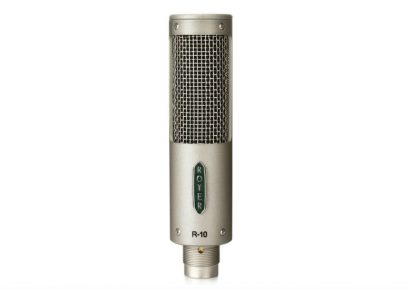Category: FET Condenser | Pattern: Cardioid
For this installment, we’re diving deep into the world of studio microphones, exploring the massive range of ribbon, condenser and dynamic options on the market for savvy producers, engineers and project studio enthusiasts.
Key Features: It would be impossible to do a microphone special and not talk about Neumann. The iconic German microphone Haus has been at the forefront of performance transducer design since the birth of recording. They are the preeminent icon in the space, a name so synonymous with electro-acoustic excellence, that it’s almost a forgone conclusion. While it would have been easy to go with the U-87’s Mt. Rushmore appeal or the ubiquitous ‘pro at home’ vibes of the TLM 103, we’ve decided to go with one of the unsung heroes of the Neumann lineage, the seldom mentioned but nonetheless incredibly versatile U-47 FET.
The U-47 FET was Neumann first attempt incorporating the various advancements in transistor technology into it’s already formidable line-up of large diaphragm condensers. The U-47 FET was a ‘transistor-ised’ update of the original all-tube U-47, itself already a classic by the time the first U-47 FET rolled around in 1969. The result was something with a completely different sonic character to its tube-based predecessor (and bore with it a completely different skillset).
While it didn’t share the same robust, big-budget beauty of it’s tube based namesake, it’s new FET circuitry made it particularly adept at picking up high SPL transient material, capturing the more explosive elements of the studio with a depth and quality that made it a standout for a rapidly changing recording climate. Under the hood, the capsule itself was still identical to that of the tube version and with that, the U-47 FET was still a more than serviceable vocal mic, but the incorporation of new FET circuitry opened it up to a whole host of new and interesting applications.
Production of the U47 FET continued until 1986 before ceasing until 2015 when Neumann decided to revive production of the underappreciated classic, using the updated schematics of the 1980 version as its primary source for the re-release. Since its inception, the FET U-47 has been a symbol of modern studio versatility, being just as at home in front of a drum kit as it is in front of a talented vocalist or string section.
Mixdown Says: With an SPL tolerance of 137 dB (capable of tolerating 147 dB with the adjustable -10 dB pad engaged) and with it’s extended LF extension its not hard to see why the FET U-47 enjoys its reputation as the de facto front of kick microphone, adding a sense of instant professionalism to the overall kit sound. It’s quite simply the perfect ‘glue’ mic. Combine this with its ability to provide body and richness in that inimitable Neumann way, and you have an extremely versatile and serviceable workhorse, with just about the highest ceiling of any mic out there. The incorporation of the low cut switch found on the back of the iconic tubular steel chassis only further increases the versatility of this beloved mic.
A smooth frequency response curve with a boost in presence without any harsh brightness lends a velvety feel to recordings which bass and baritone singers will find flattering, and is very useful for treating any unwanted harshness in vocals or brass instruments. With a self-noise level of 18 dB, you won’t be reaching for the U-47 FET to record the whispering of the wind, but you won’t need to be overly cautious about noise at this end of your signal chain either. The FET U-47 can be put to great use on guitars, adding its slick, expensive sheen to both electric and acoustic sounds alike.
Overall: The U-47 FET is a legendary microphone, bringing that inimitable Neumann vibe to everything it touches and bringing it to sources you never thought needed it. Thankfully Neumann’s dedication to preserving the original design means that everyone can get their hands on this piece of musical history. Let’s hope they can do the same for the original U-47 as well.
Find out more about this long-standing studio icon here.

